In the previous post, I mentioned about the aquatic birds in Vasai. These migratory birds are usually in Vasai during the monsoon period from July to September when small lakes and ponds appear all over the places offering better conditions for these birds to settle and breed and then move ahead. In this post, we move on to the forest and grassland Vasai birds and many of these resident Vasai birds are here throughout the year because they are not dependent only on fish for their food.
Baya Weaver
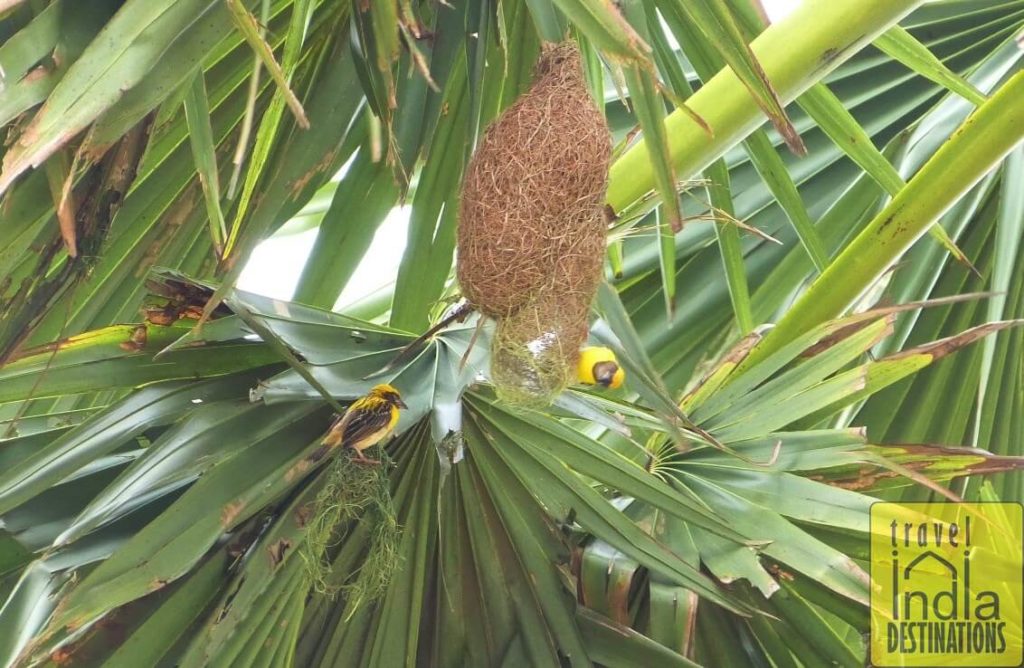
Baya Weavers in Vasai
While most birds are hard to find, Baya Weavers luckily is easy to spot in my neighborhood. This means I get more time to research on these forest and grassland Vasai birds. They are very chirpy, playful and social in nature. These birds usually weave their nest close to a pond or a lake. Baya Weavers weave these unique bottle-shaped hanging nests made from fresh grass. The most interesting thing I love about these sparrow-sized birds is how they choose their mate.
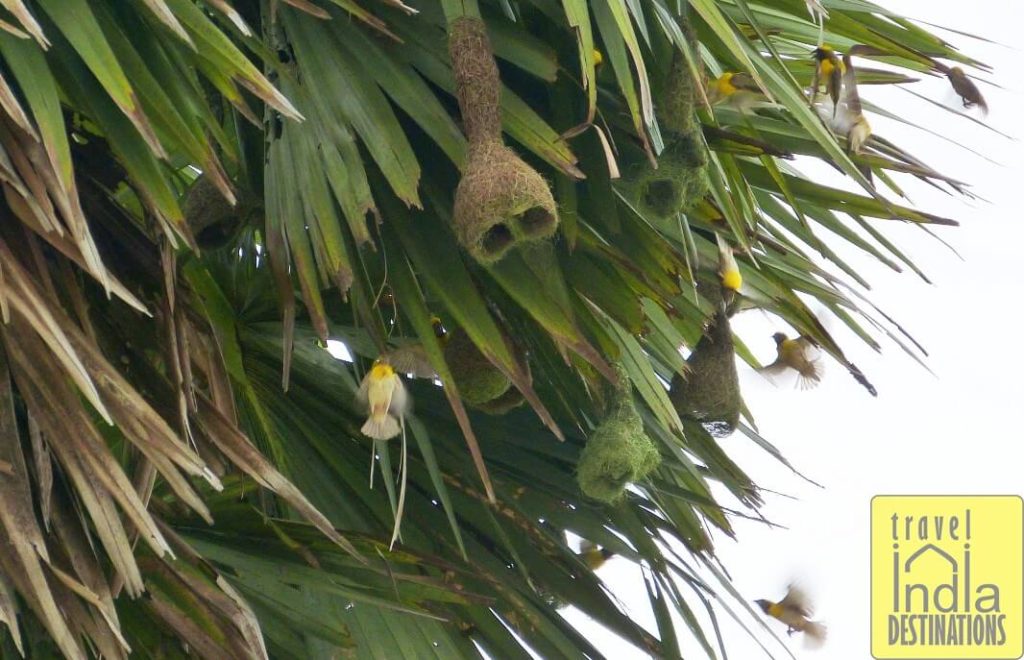
Baya Weavers
The male baya weaver starts weaving the nest and when he is done halfway through he makes a high-intensity chee-chee sound to let females inspect his half-done nest. The female baya weaver inspects the nest thoroughly. If she likes it, she stays and the male bird will complete the remaining portion of the nest. If she doesn’t like it, she flies away, and the male bird re-builds it again from the scratch.
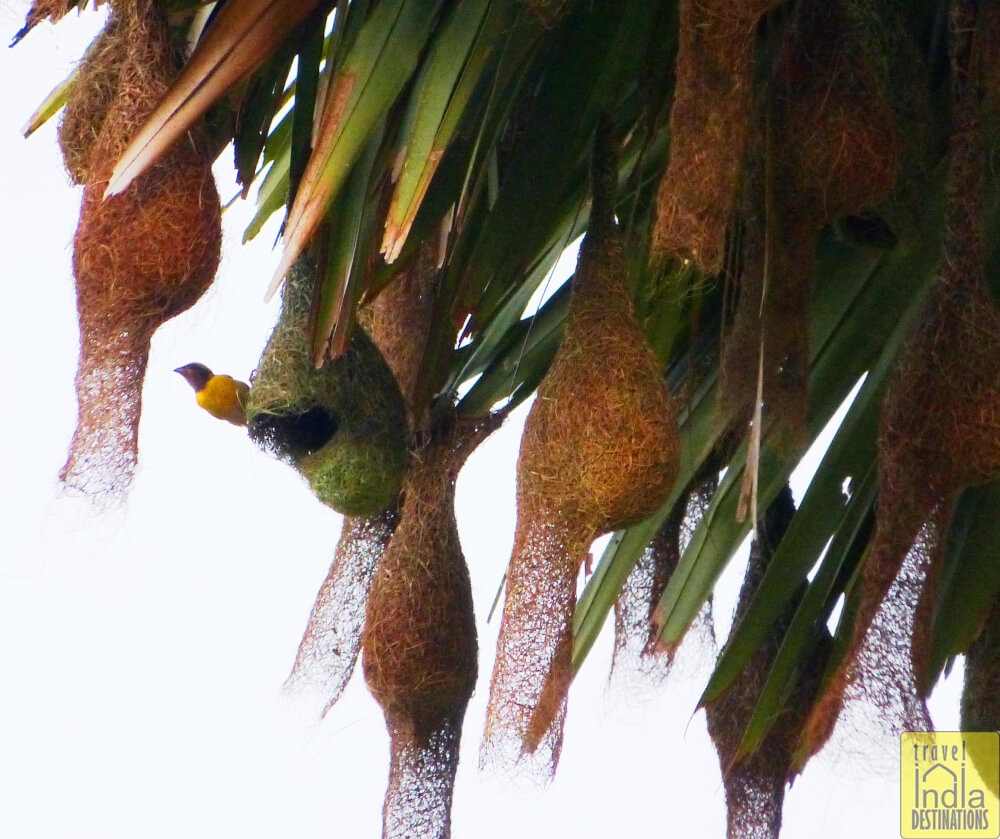
Baya Weaver Building a Nest
I did further research on Baya Weaver’s nest and found that typically it takes around 18-20 days for the bird to build a nest. This includes almost 500 trips from the grassland to the nest, picking up the right grass and weaving it carefully to impress the female.
On an average, there are 3500 grass strands woven intricately to support the eggs and the birds themselves.
Look out for the Acacia or palm trees as Baya Weavers usually build their nest high up to protect themselves from predators like snakes and rodents. Once they are gone after the monsoon season, these abandoned nests become home to other smaller birds looking for ready-made shelter.
Black Drongo
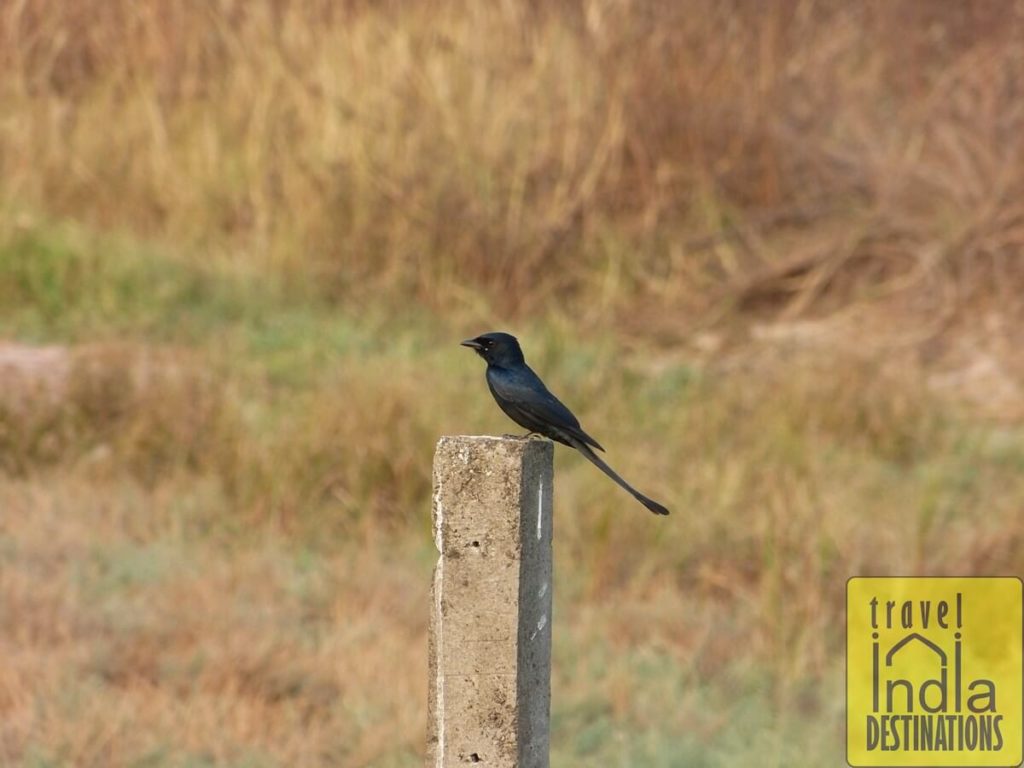
Black Drongo
The first time I saw Black Drongo I thought it was a swallow because of its dual-shape tail. Eventually, I found out that Black Drongo is quite different from a swallow. This guy is small in size but has a serious reputation of a fighter. I usually find black drongos during the early morning and evening time when they are sitting still observing patiently from high strung electric wires. It is hard to find them during the afternoon time when they probably return to their nest.
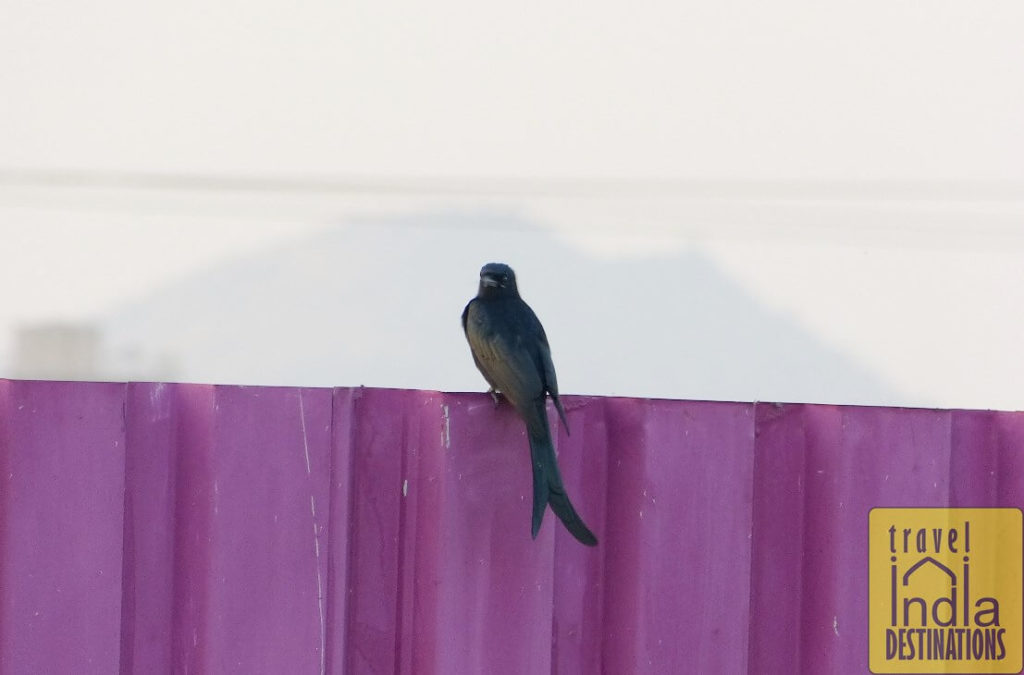
Black Drongo
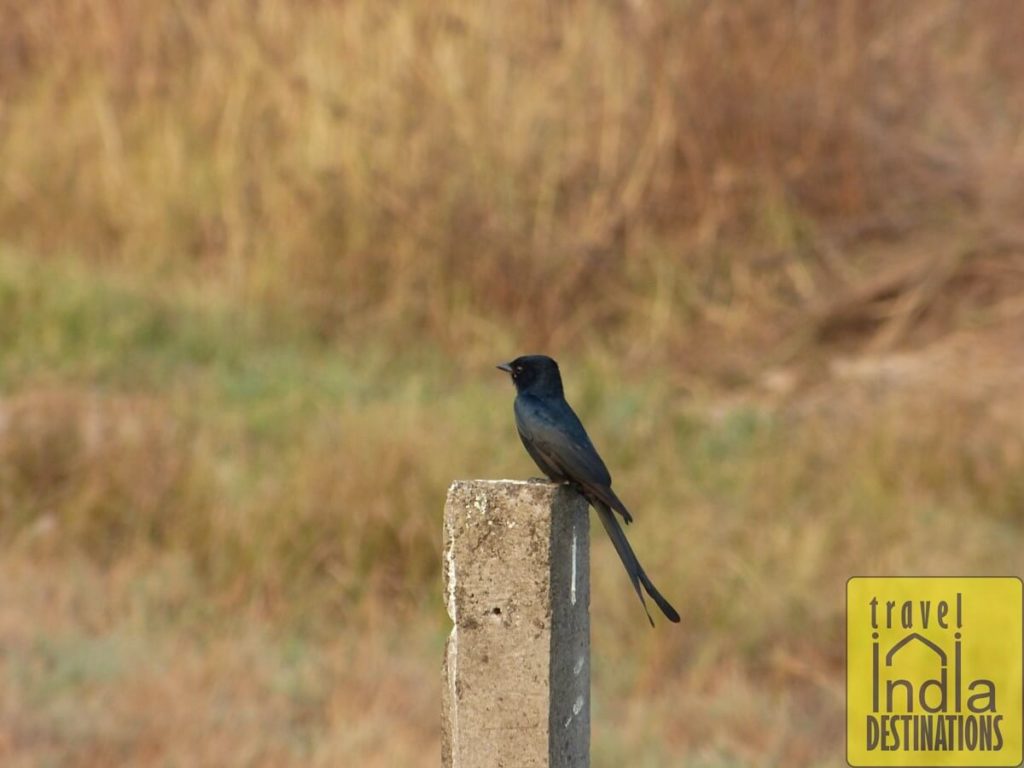
Black Drongo Vasai
Black drongo feeds on insects and they usually stay close to birds like common myna, pied myna and egrets as they share common habitat and diet. You will also find Black Drongo usually sitting near electric poles because they feed on the insects that attract to artificial lights. Since Black Drongos has an aggressive behaviour, other birds like doves, orioles, pigeons, babblers and bulbuls make their nest in the vicinity. Black drongos can even mob birds twice their size if threatened and hence are the fiercest forest and grassland Vasai birds.
Golden Oriole
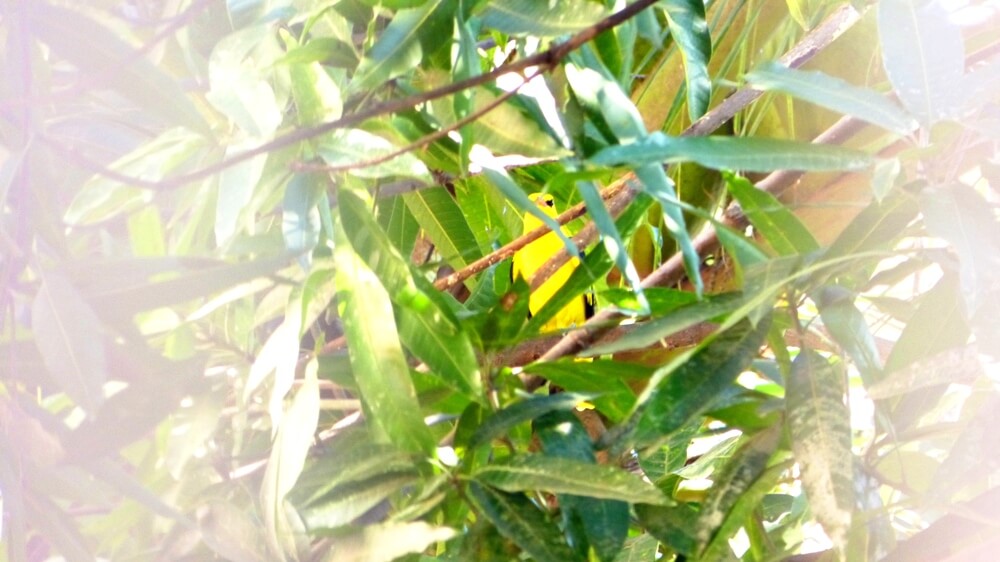
A Shy Golden Oriole
If I ever get to vote for the sweetest bird call it would be the Golden Oriole. This bright yellow-black bird has certainly made a place in my heart and I can occasionally hear its call during early morning hours. In this list, Golden Oriole is certainly the hardest to find and it can test your patience to the limits.
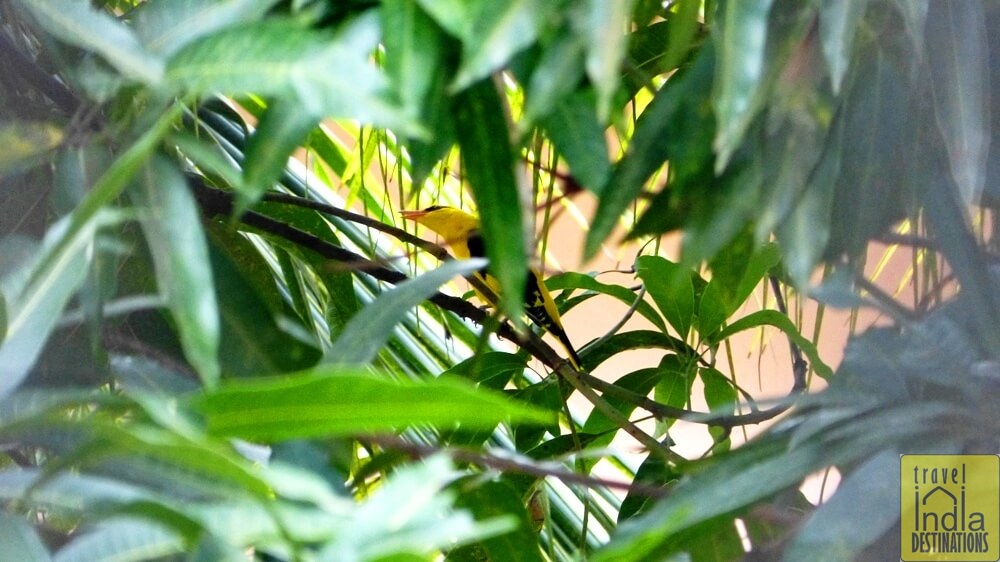
Golden Oriole in Vasai
This shy bird never sits out in the open; at least, I haven’t seen it in all these years of observing. The female is green in colour and this makes it even harder for us to spot her on the tree. I still haven’t been able to see her clearly because of her perfect leaf-green plumage. Golden Oriole usually feeds on insects and fruits and certainly is a top favourite of all forest and grassland Vasai birds.
Pied Myna
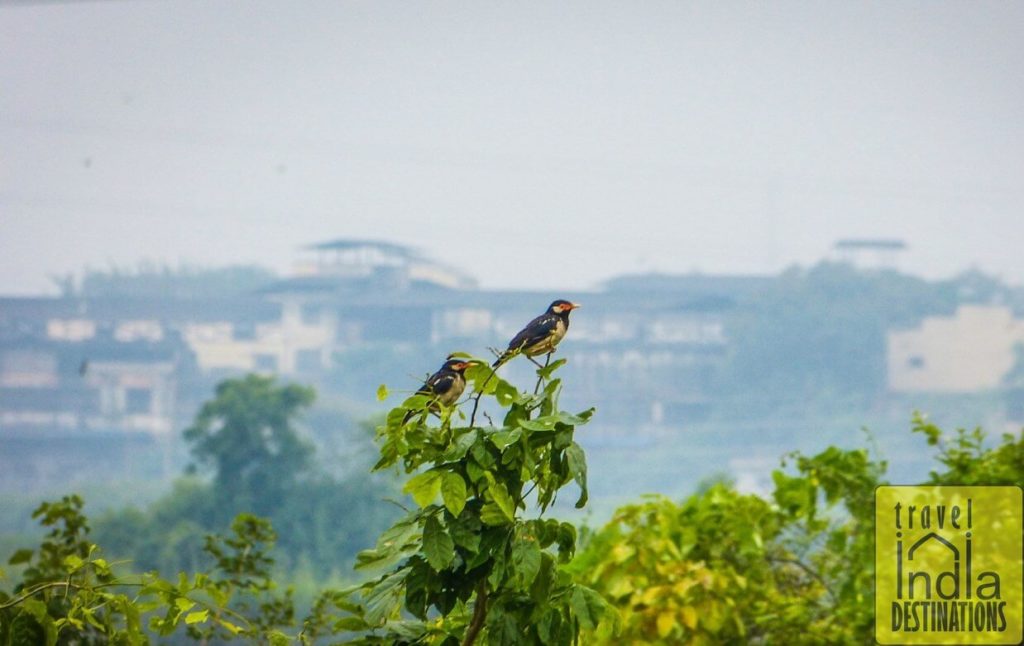
Pied Myna Scanning the Perimeter
While common mynas are everywhere in Vasai Pied Myna or Asian Pied Starling still nest in limited areas. Compared to the common myna, these birds are not very bold and aggressive to hunt for their food. They look different from the common myna because of their black and white plumage and reddish bill. I usually see them close to areas where they can have access to open water and close to human settlements because they can pick up the leftovers rather than go hunting for food. They usually make their nest in man-made settlements or over electric poles and even in mango trees.
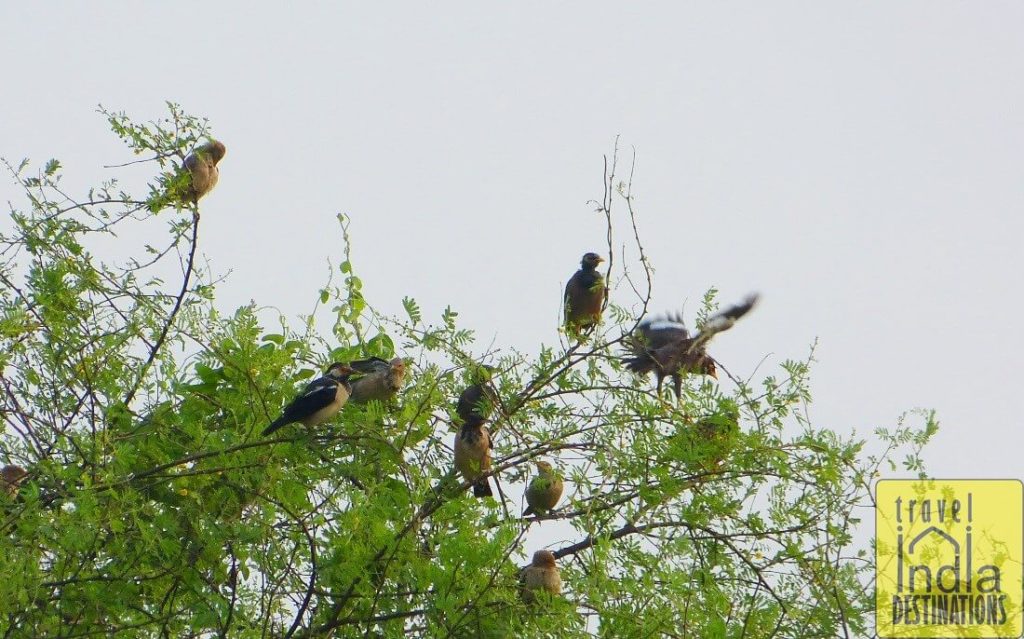
Pied Myna with Juveniles
Spotted Munia
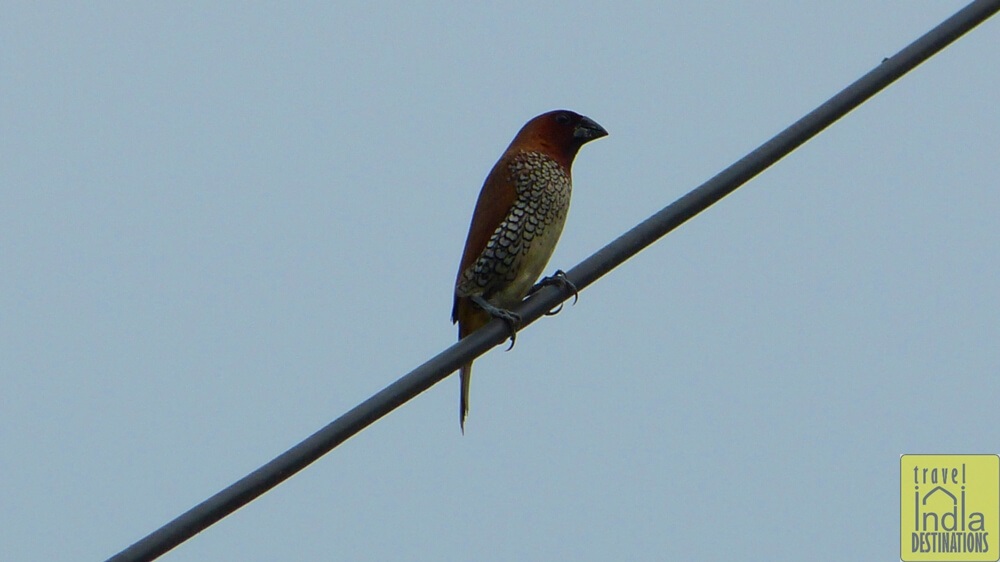
Spice Finch
Spotted Munia looks identical to a common house sparrow because of its size and color. However, when you take a second look you realize that it certainly is different in many ways. Its distinctive scale-type feather marks on the breast and belly quickly allow you to identify this tiny bird. Very quick in the air, Spotted Munia is also known as Scaly-Breasted Munia or Spice Finch.
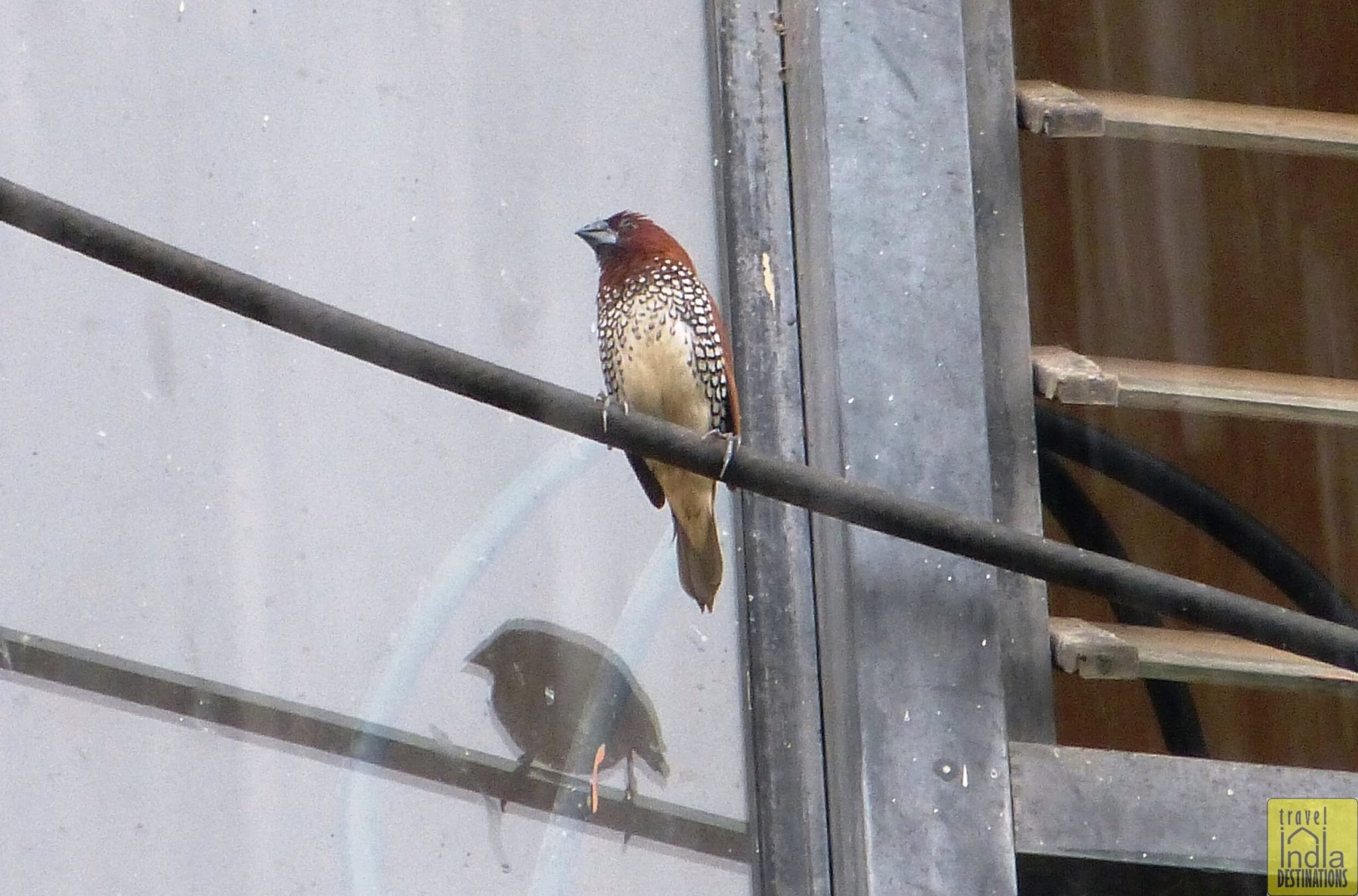
Spice Finch on a Cable
The movements and behaviour are very similar to a sparrow or a finch and they are usually in a group. They also tend to flick their tail more than the sparrows and I found that this tail flicking movement is a kind of social indicator helping them to flock and stay together. Spice Finch usually looks for seeds, berries, and small grains. They usually pick a nice spot close to paddy fields where they can get grains and water in plenty.
15 comments
Birds are so fascinating and I love watching them.
I enjoyed reading about your different birds. My favourite was the Spotted Munia. I think even I’d be able to recognize that one with such distinctive markings.
Munia is so tiny and she is so quick in the air. I almost thought she was a sparrow while in the air, it was only later I saw those scale design and realized the difference. My favorite is the Golden Oriole. You should listen to his calling. Sweet. But he is so shy he gave me a tough time while shooting pictures.
I’m impressed you got any pictures. I find birds are too fast for my limited photographic ability!
It took me and Sarah more than a year to take these pictures. All these pictures are hard work done by Sarah.
Pretty birds……😊
I love photos of birds. These are wonderful. I get a few every week while walking around, but I mostly only have common birds. You have quite a collection. The Drongo on the wire looks like a tough guy, I really like that photo. Nicely done!
He is tough. He just sits on that high wire and sweeps the area. Don’t underestimate his size.
I love the birds, Sharukh! My favourite animals. Thanks.
Hi – I love your photos and nature writing – came here from dan’s blog by the way!
Anyhow – I agree with Joanne with finding it tough to photograph birds! You have a talent
And my fav pic here is the Drango in the man made fence – what an artsy tail!!
Thank you for your time and comment. When I used to watch NatGeo and Discovery I was always excited by the kind of videos and photographs they capture. I never knew how hard it was to fit them in a frame until I tried it. Waiting like a scarecrow, quiet and still until some bird feels pity on you and comes to check you out. 🙂 Drongo is a fierce bird and they are more active during sunset hours and like you said they have this sort of double-hook artistic tail. I haven’t really gone through your blog in details (I will do that in next few days), but while I was reading I read that the actual intended audience never visited your blog. So, was curious to know who were your actual intended audience? 🙂
Hey – thanks for the reply!
For a second I was right there with you as you waited and the birds 🐦 came to you.
In 2008 We put a huge row of trees along our back fence and in the last few years the birds have been good company – but no good photos at all!
Well one – which is actually from out front and the bird was inside my neighbor’s tire spokes – cute photo!
Oh and wow – that question brings me back.
I will keep it short….
I spoke up to someone at a cookout and was looking like a big crank – when actually this dude is the crank and offends people left and right.
Well he was cross contaminating hamburgers and I pointed it out – and I had also spoke up about something before that and so I felt bad after the cookout and in the next few days – went into my WP blog – which had been sitting as I had a website and four other blogs – not WP ones (I was a teacher)
Anyhow – I made like six or seven posts and told my hubs that it would be a place where they could see my heart – and that I was not just a crabby hamburger police lady.
After those posts, I was about to let it go dormant – but would stay there if they wanted to see sides of me you don’t see at potlucks and pool parties-
But then I had followers –
And more followers
And that was fun.
I posted lit for months and then did photo challenges and it really helped me have a hobby and hone skills.
Ok – your turn – why did you start blogging?
Now, I’m really excited to read your posts, so I have that in my to-do-list. Why I started blogging can run into pages, but to keep it short and simple. I am a professional content writer. So when I started my freelance journey I was mostly ghostwriting. I was writing for my clients 10 hours a day, but I had no profile of my own. I was more of a ghost than a ghostwriter so I decided to write a blog to be visible online. I thought writing on travel would be good because I love to travel. So I started writing particularly about India travel for the Indian audience, but like yours my blog never received the intended audience. I started getting more of international audience excited to know more about India. I get emails asking some crazy questions about honeymoon and shopping although I’m no honeymoon expert here, but it was fun so I continue writing on topics which you don’t find on the internet. I pick topics which you don’t find on apps and travel websites. Further in the future, I want to make this blog into my business. I don’t claim to be an exceptional travel writer, but I think I’m good at storytelling so I will use that to my advantage.
Oh that sounds like a good strategy – and as I read it just now – I felt a genuine and ethical approach – if that makes sense. Maybe not the best words, but it just seemed like an assertive way to build a business versus some of the more aggressive approach that comes with force and maybe too strong – I dunno – but it also sounds like you are letting it unfold and willing to meander with it – and that is cool.
Have a good day and I’ll be back this weekend
It won’t allow me to “follow”. I hit the bar but nothing happens. 😐
Hi Cheryl, I’m extremely sorry for the inconvenience caused. I would request you to kindly visit the site and subscribe again. You will find the newsletter section on the right sidebar. Type in your email address and name and click Subscribe button. You should receive an email for confirmation. Click yes in the email to confirm. Let me know if it works out.